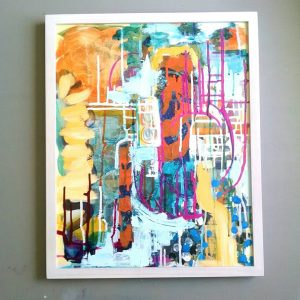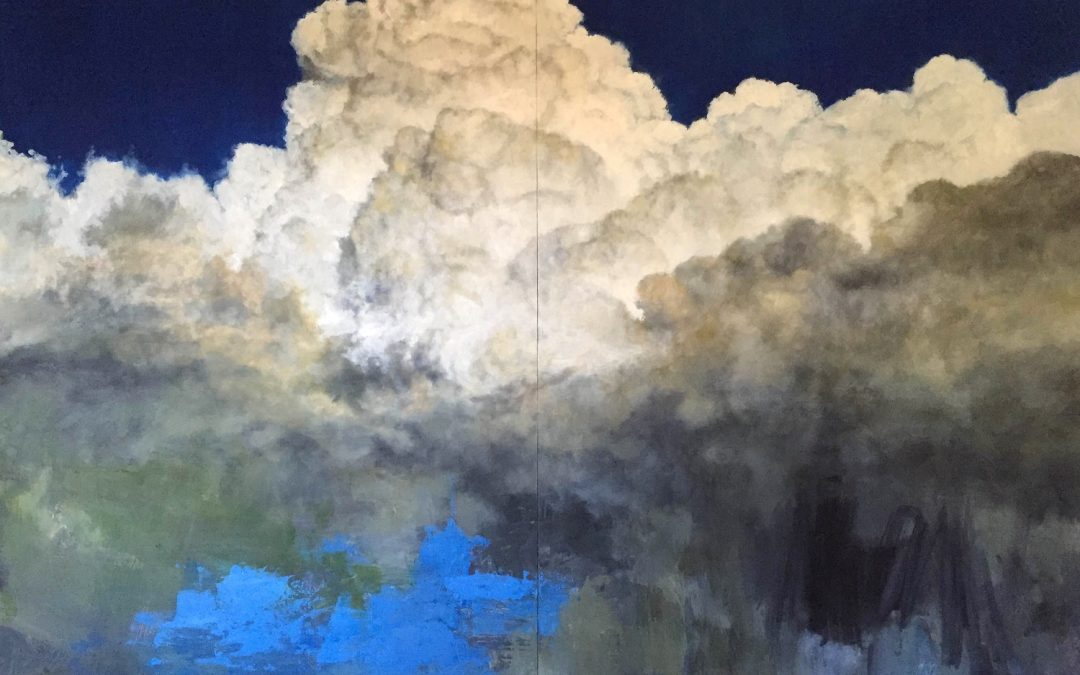Eight Tips to Sharpen Your Marketing Skills
A few years back, a report in the online edition of Vogue predicted that “Instagram’s arguably positive democratization of high art will see the end of many an art dealer’s career.” Well, I very much doubt that because people will still want one-on-one experiences with works of art and, let’s face it, much so-called “high art” is not meant to be democratized. The best and most rewarding encounters will still be in the gallery, the studio, or the museum, where collectors and art lovers can connect with the qualities that make art thrilling—attributes like scale, brushwork, texture, composition, color, and other tangibles (and intangibles).
That said, social media offer ever more seductive ways to get your art out there. I’ve already written in a somewhat generalized sense about the reasons artists use Instagram, but when I noticed more and more members turning to that platform to generate sales, I wanted to hone in with more specific information. So here are eight tips for making sales and finding collectors.
- “Post frequently, but not so frequently you’re overwhelming the system,” advises Peter Roux, an artist who combines lush landscapes with abstract idioms. “If you’re posting multiple times a day, that tends to put people off.” Some say once a day is more than enough; others post a few times a week. To repeat some advice given earlier, Mondays may be the best days to post. And Bushwick artist and curator William Norton thinks you should be even more specific than that. “It’s important to post at the same time every day,” he says. “People know when to expect it, when to look for it. It’s best to post after the work day, or an hour or so before the end of the work day.” If you’re reaching out to an audience halfway around the world, then of course it makes sense to post later at those times of day that will correlate with overseas down time.
-

Elyce Abrams, shown here at a recent solo exhibition, has sold 85 paintings in the $200-$500 range on Instagram.
“Do some kind of project that makes your work accessible, like 100 paintings in a year,” says Elyce Abrams, an artist in Philadelphia who launched just such a venture in 2016 and to date has sold about 85 paintings through Instagram, in a range of $200 to $500 (plus shipping). You could gear your work to a specific medium, say watercolor or woodcuts, and let readers know that this is an experimental or new venture for you. They can track your progress in a kind of unfolding narrative.
- Put the best images possible out there. “I try very hard to make sure the colors are accurate,” says Abrams. “I take photos with a good camera and then send them to my email account.” As I’ve discovered, the photos from my iPad are perfectly okay for showing the cat tiptoeing out of the dryer, but I’d never trust that camera for an artwork. You can take better photos with even cheap smartphones, and late-model iPhones are better than most point-and-shoot cameras. (If taking photos and then editing them is not your strong suit, you’ll find some good tips here. )
-

Christine Sauer has priced Touching Not Touching (acrylic and collage on panel, 20 by 16 inches) at $670, including the frame and shipping
“People are interested in process, in seeing how you do what you do,” says Roux, who has posted engaging photos of himself, his studio, and his adorable pup. Others, like Norton and Brenda Zappitell, offer up videos of the artist at work or interesting events, like a short clip of a concert at an opening. Show some discretion in what you put out there, however. “You can find artists who are major marketers, but in a way that’s rather uncomfortable,” Roux says. “I see young female artists who are very attractive, posing with not a whole lot of clothes on. Obviously, you’re not talking about the work anymore.”
- “Make your Instagram profile interesting and appealing,” says Christine Sauer, a painter and Golden Artist Educator in New Orleans. There is not a whole lot of space on the system to talk about yourself, as you might on Facebook, but you can tuck in a few provocative words and offer a direct link to your website, or just to the sales arm of your site. “You want to appear confident as a seller,” she adds. And to that end she has put together a pricing strategy that is consistent with what she has on her site and offers free shipping in the States to simplify the process. She also tells prospective collectors to “DM” (direct message) her for more information.
-
“Fine tune with hashtags,” advises Roux. “You want to determine whose eyes will be looking at the work.” I don’t think I’ll ever completely understand how these work, but as Roux says, “you never know what might happen as a result of hashtagging.” He typically uses hashtags like #contemporarylandscape, #picoftheday, #oiloncanvas, #newyorkartconsultant, and #artofinstagram. If you’re not sure, check to see how other artists are posting and ask friends what has worked best for them. Hashtagging can be a way of finding collectors who are looking for very specific genres or attracting art consultants browsing for, say, #rurallandscapes. “Hashtags become clickable links, and you can also search them with the IG search tool. This is how people discover new artists,” advises one internet site. The ideal number of hashtags is flexible, but it’s probably somewhere in the three to eight range. You can put hashtags around nearly anything, but consider adding tags around your medium, subject matter, and the location your image was created. This last one helps people find local artists.
- Be careful not to make your Instagram feed entirely about sales. Mix it up. Post about shows or art you like. Ask for feedback for works in progress. Consider making trades with other artists as a way of expanding your network. “The more ways you put yourself out there, the more people might become interested in you.” Adds Abrams, “You have to walk a line. I follow the work of another artist who is always pricing her art and her feed starts to look too much like a sales catalogue.”
- Bear in mind that Instagram is primarily about cultivating an audience. “It takes time to build trust,” says Sauer. “Posting consistently and engaging with followers through comments is crucial.”

Abrams’ #27 (2016, acrylic on panel, 12 by 12 inches) was part of her “100 Paintings in a Year” project
Though the system is easily mastered and doesn’t cost a dime to its users, Instagram can be pretty much a crap shoot for sales. “I’ve heard that only one percent of people will buy from you, so it helps to have many followers,” Sauer observes. And yet the networking can prove priceless. “I’ve made connections with consultants and galleries and invitationals,” says Roux. “One collector saw my show at Lyons Weir Gallery in New York, and then she found me on Instagram. She posted about the show on Instagram and said, ‘Run, don’t walk!’”
You can’t buy a better endorsement than that.
Ann Landi
Top: Peter Roux’s majestic Suspension (east sky) 1 (2015, 35 by 48 inches, oil on connected panels) easily found a collector on Instagram



Thanks for this, Ann. I started using Instagram recently, and like it, but the hashtags have been a mystery. The other pointers are helpful, too.
Thanks for the tips!
thanks Ann, this was very helpful Ive been posting on instagram but its a different format so only square pictures that can be appreciated as thumbnails. Maybe I should change that?
Get in touch with some of the members I interviewed. I will send you email addresses.
Tap twice on the image your are about to post in IG and it will go landscape mode instead of square.
Thank you Ann. There are some good tips here for tweaking my instagram practice.
Thanks Ann, this was interesting and informative. It’s encouraging that Elyce Adams has had so much success selling. I love Christine Sauer’s work (not to mention she’s a wonderful friend) and her suggestions are also good. She’s motivated me to look at my profile to see if it could be improved and I’m sure it can.
I wonder if selling and making connections with galleries can happen together or if they’re mutually exclusive?
This info is so helpful! I am rereading it and taking notes. I must say I am very attached to Instagram, since I can see so much art so quickly, while I am connecting with new artists and supporters of the arts. It is a real sense of community. I now want to try to connect with potential buyers for sure. Thanks!
Helpful information. Thank you.